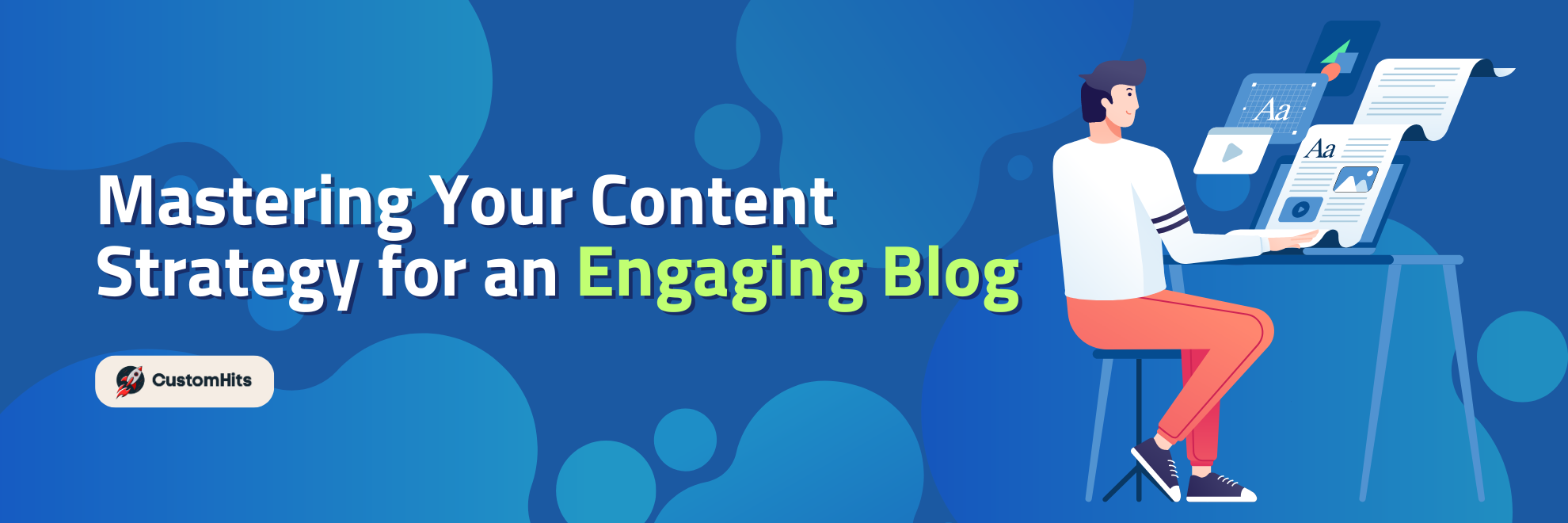

Overview
Content
Understanding the Basics of Content Strategy in Blogging
Delving into the realm of content strategy within the blogging ecosystem requires foundational knowledge that transcends merely churning out content. At its core, content strategy revolves around meticulously planning, developing, and managing content that is not only compelling but also aligns seamlessly with your overarching goals. This strategic framework mandates a deep dive into who your target audience is, the unique voice and personality your brand embodies, and the key messages you wish to convey. It’s about understanding that every piece of content, whether a blog post, infographic, or video, should serve a purpose and contribute towards achieving your broader objectives.
An effective content strategy necessitates a comprehensive approach that encompasses content ideation based on audience insights, content creation tailored to these insights, and a distribution plan that ensures your content reaches its intended audience through the most effective channels. It’s also about embracing flexibility within your strategy, allowing you to adapt to your audience's evolving preferences and the digital landscape's dynamic nature. By prioritizing these foundational aspects, you're poised to craft content that not only resonates deeply with your readers but also amplifies your brand’s voice in the crowded digital space. Engaging in this level of strategic planning sets the stage for building meaningful connections with your audience, fostering a sense of community around your blog, and ultimately driving forward your blog’s growth and success.
Identifying What Your Readers Want to Read
Uncovering the desires and needs of your audience is a pivotal step in fine-tuning your content strategy. This task demands engaging directly with your readers through various methods to grasp their interests, challenges, and questions they seek to have answered. Surveys, polls, and feedback forms distributed across your blog and social media platforms provide invaluable insights into the minds of your audience. Additionally, engaging in conversations within comment sections or online forums related to your niche can reveal topics of interest and areas needing clarification or deeper exploration.
Leveraging analytical tools offers another layer of understanding. Analyzing patterns in user behaviour on your blog, such as the most read articles, time spent on pages, and the bounce rate, uncovers what captivates your audience and what might be missing the mark. Pairing this data with social media interaction metrics helps paint a comprehensive picture of your audience’s preferences.
Equally important is keeping an eye on the questions and discussions happening in your niche on platforms like Reddit, Quora, and niche-specific online communities. These platforms can be goldmines for discovering what your potential readers are curious about and the problems they are trying to solve.
Incorporating these strategies into your content planning process ensures that your blog remains a dynamic, responsive resource that evolves with the interests and needs of your readers. It’s about creating a two-way dialogue where your content reflects a deep understanding of your audience, encouraging their continued engagement and loyalty.
Researching Popular Topics and Trends
To keep your blog vibrant and relevant, tapping into the pulse of your industry by researching popular topics and trends is paramount. This proactive approach ensures that your content not only caters to your readers' current interests but also positions your blog as a go-to resource for insightful commentary on emerging trends. Leveraging digital tools like Google Trends allows you to monitor the ebb and flow of topic popularity over time, pinpointing when certain discussions are gaining momentum. Social media platforms, with their hashtag functionalities and trend aggregators, offer real-time insights into what topics are capturing the public's attention at any given moment.
Diving deeper, industry publications and newsletters serve as a rich source of curated content, highlighting thought leadership and innovation within your niche. These publications often forecast trends before they hit the mainstream, giving you a competitive edge in content creation. Participating in industry webinars and virtual conferences can also unveil emerging trends and topics that are likely to influence your audience's interests in the near future.
By integrating this multifaceted approach into your research strategy, you ensure that your blog not only stays ahead of industry trends but also resonates with readers by delivering timely, relevant, and engaging content. This commitment to staying informed and adaptable enriches your content strategy, fostering a blog environment that thrives on both current relevance and forward-thinking insights.
Finding and Cultivating Your Niche
Identifying a unique niche is a transformative step for any blog seeking to make a mark in the crowded digital ecosystem. It involves pinpointing a specialized area that not only matches your passions and expertise but also addresses a gap or underserved audience within the broader market. To successfully cultivate this niche, you need to immerse yourself in the targeted community. This means participating in online forums, social media groups, and other platforms where your potential readers congregate. Listen intently to the conversations happening there; note the questions frequently asked and the topics that stir the most interest or debate.
Developing a deep understanding of your niche also involves keeping abreast of any developments or changes within this specialized field. Subscribe to niche-specific newsletters, follow influencers and thought leaders on social media, and stay connected with the latest research or studies that could affect your audience's interests and needs.
Once you have a firm grasp of your niche, tailor your content to address the specific concerns, joys, and curiosities of your audience. This level of specialization not only makes your blog invaluable to your readers but also helps in building a loyal community around your content. Engaging directly with this community through comments, social media, or personalized emails further strengthens the relationship, encouraging feedback and fostering a collaborative environment where your content continues to evolve in alignment with your audience's shifting preferences and interests. This ongoing dialogue is essential for sustaining and growing your blog within its niche.
Creating a Content Calendar That Works
Crafting a content calendar is an essential step in streamlining your blogging process, enabling you to visualize your content pipeline and ensure a balanced mix of topics. Begin by setting realistic goals for content frequency, considering your capacity to produce quality content alongside your other commitments. Incorporate important dates that resonate with your audience, such as industry events, seasonal topics, or relevant holidays, to make your content timely and more engaging.
Use a tool or platform that suits your workflow, whether it's a simple spreadsheet or a more sophisticated content management system, to plot out your posts. Each entry should include the post title, the intended publish date, the main keywords, and any notes on the content direction or specific calls to action. This approach not only aids in maintaining a consistent publishing schedule but also allows for flexibility to adjust content based on emerging trends or feedback from your audience.
Incorporating thematic series or recurring segments can also add structure to your calendar and give your audience something to look forward to. As you populate your content calendar, be mindful of diversifying your content types to cater to different reader preferences, integrating a mix of in-depth articles, quick tips, infographics, and videos. Regularly review and update your content calendar to reflect shifts in your content strategy, ensuring it remains aligned with your objectives and responsive to your audience's evolving interests.
Measuring Success and Iterating on Your Strategy
To refine your content strategy effectively, implementing a cycle of evaluation and adaptation is crucial. Utilizing analytical tools such as Google Analytics for web traffic and engagement insights, coupled with social media analytics for understanding audience interactions, provides a solid foundation for assessment. Key performance indicators (KPIs) like bounce rate, average session duration, and new versus returning visitors offer a window into your content's appeal and areas for improvement. Social media engagement metrics, including likes, shares, and comments, further illuminate content resonance and reader investment.
By dissecting these metrics, pinpoint areas where content adjustments could enhance reader satisfaction and engagement. For example, if certain topics consistently perform well, consider producing more content in those areas. Conversely, underperforming content may signal a need for a different approach or topic focus. Regularly revisiting your strategy to incorporate these insights ensures your blog remains dynamic and closely aligned with reader interests. This process of continuous improvement keeps your blog fresh and relevant, encouraging sustained reader engagement and fostering growth.
